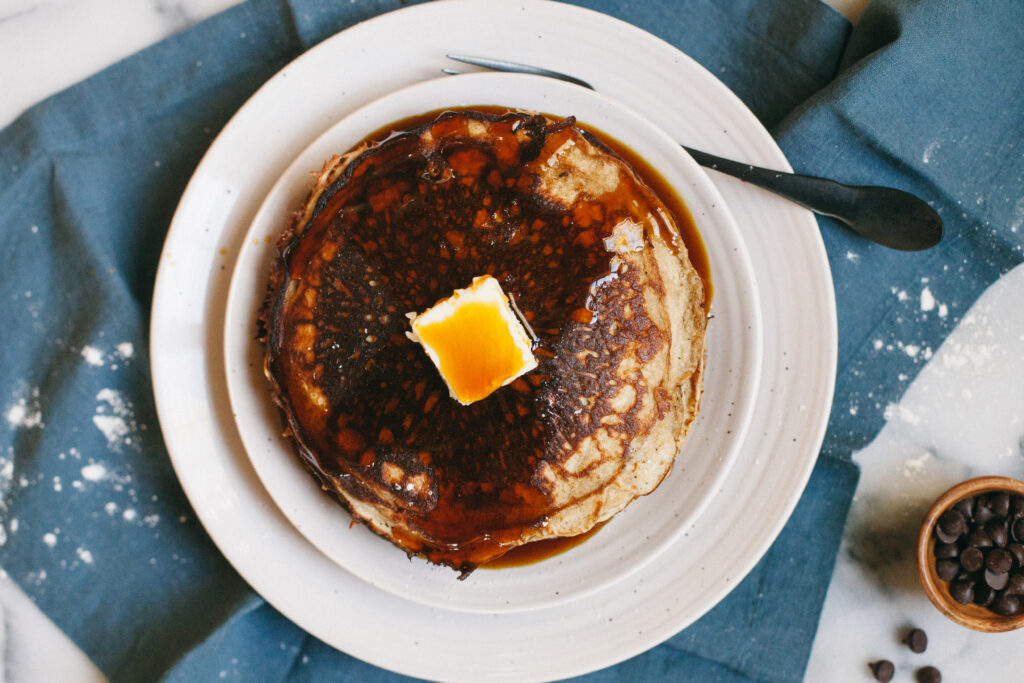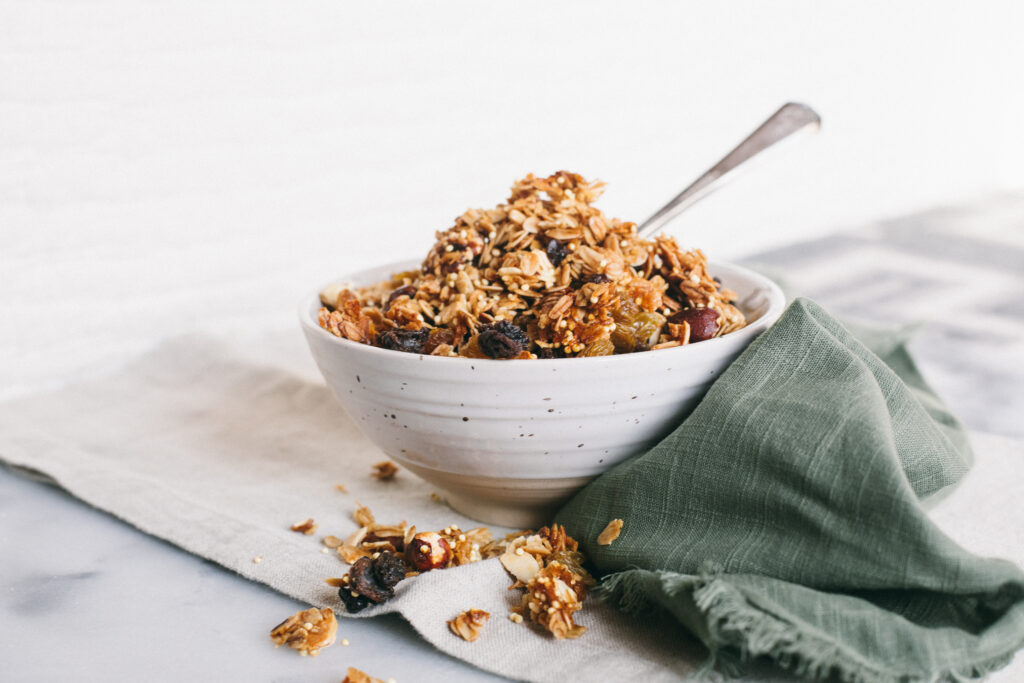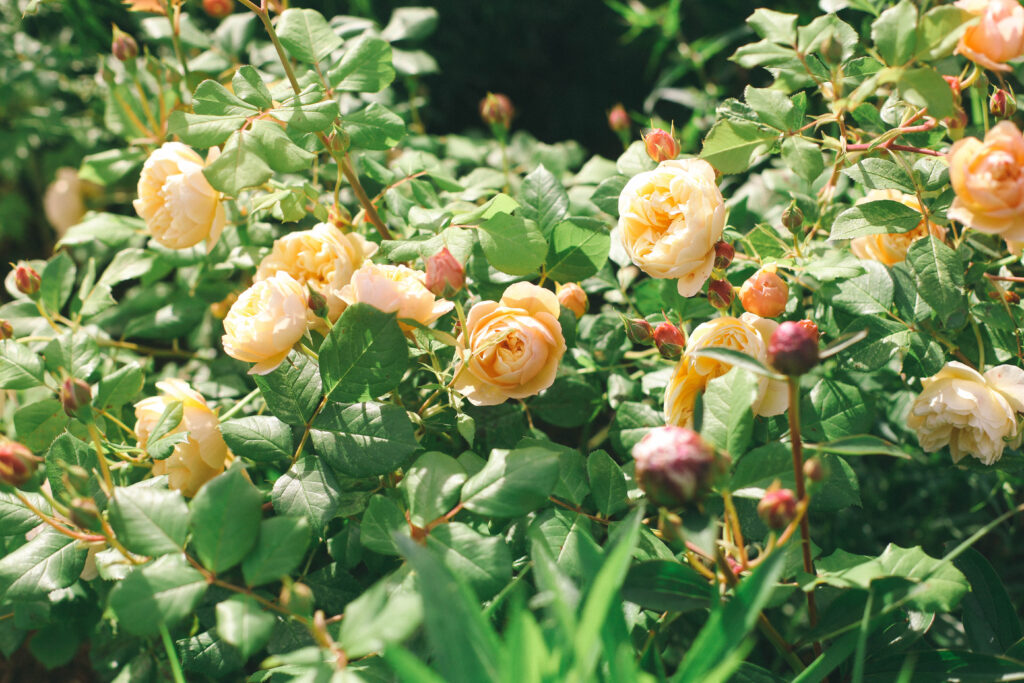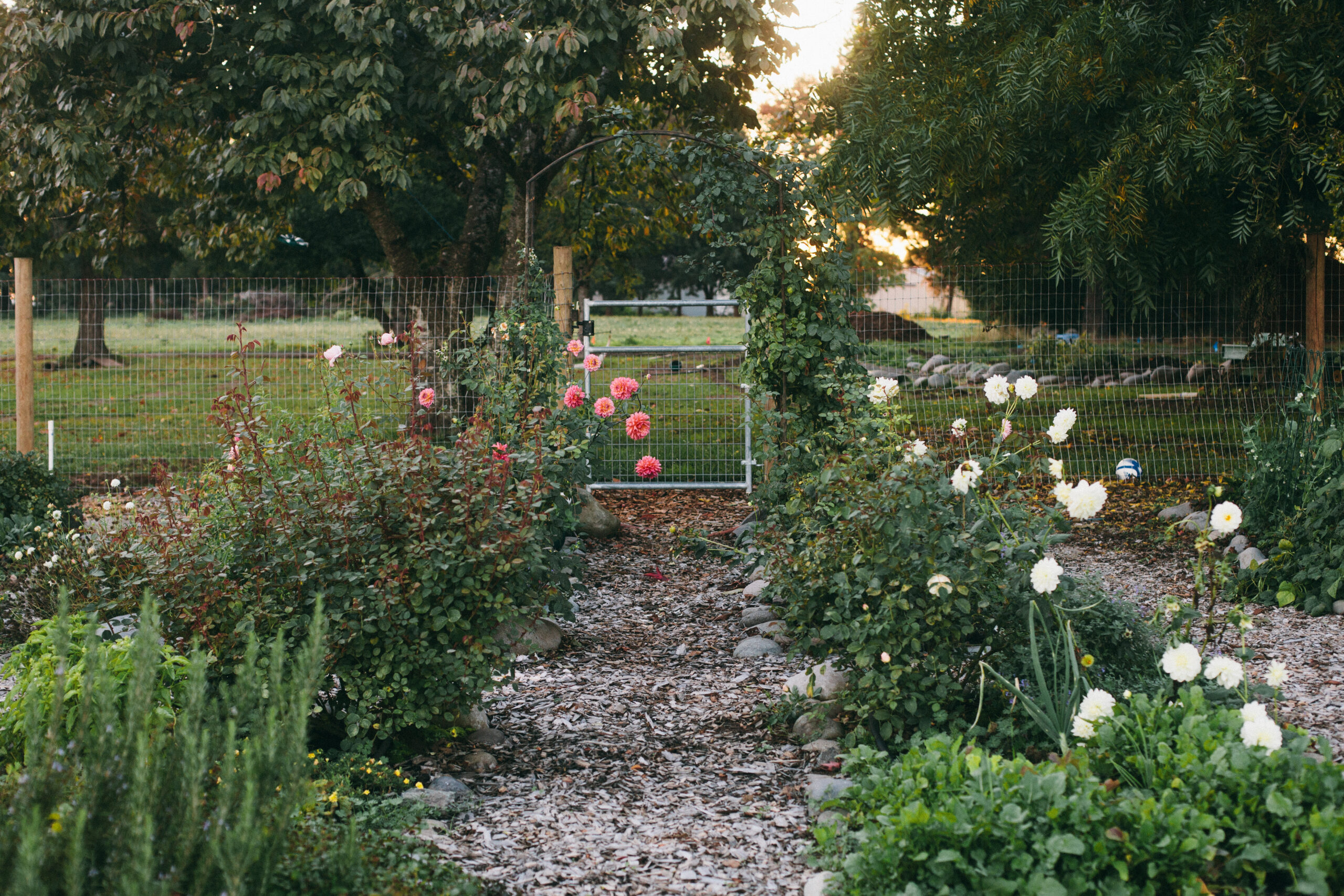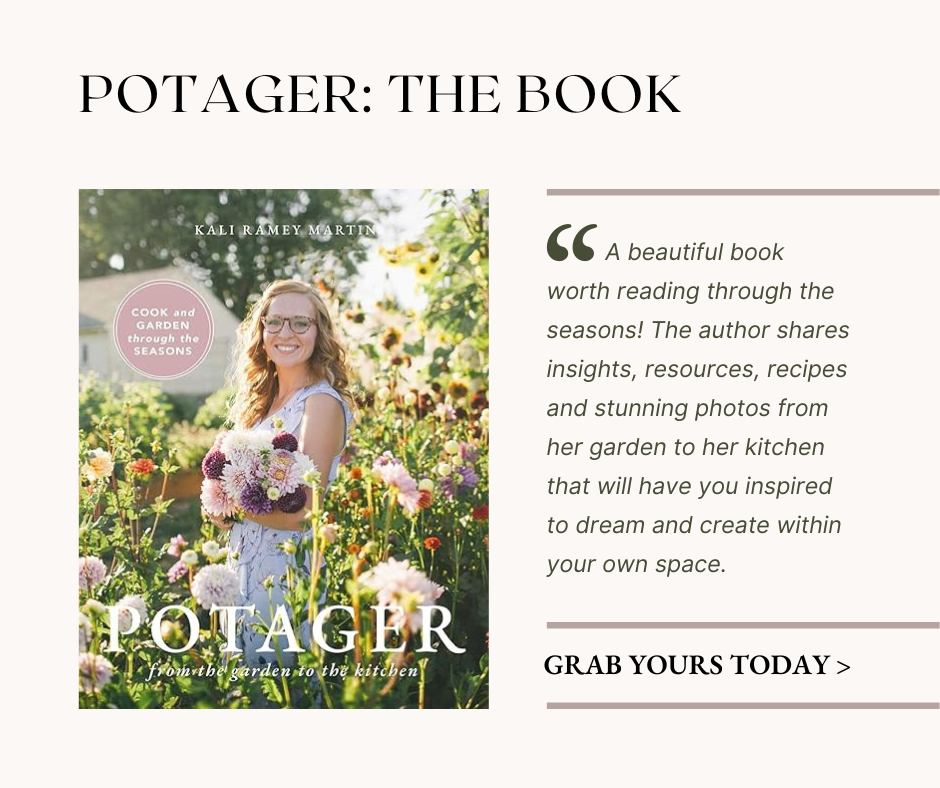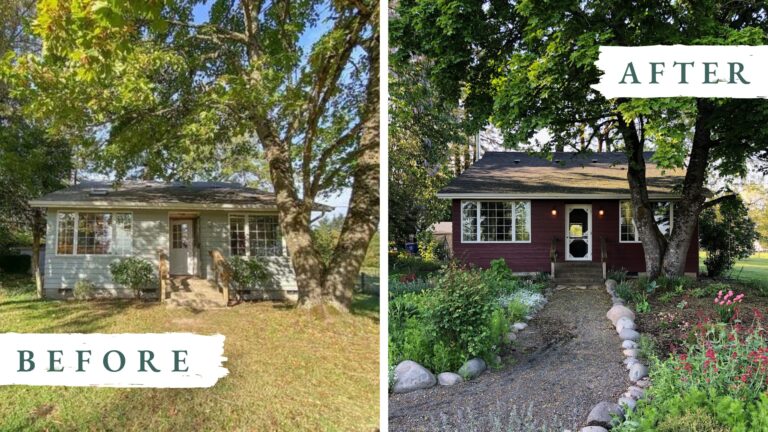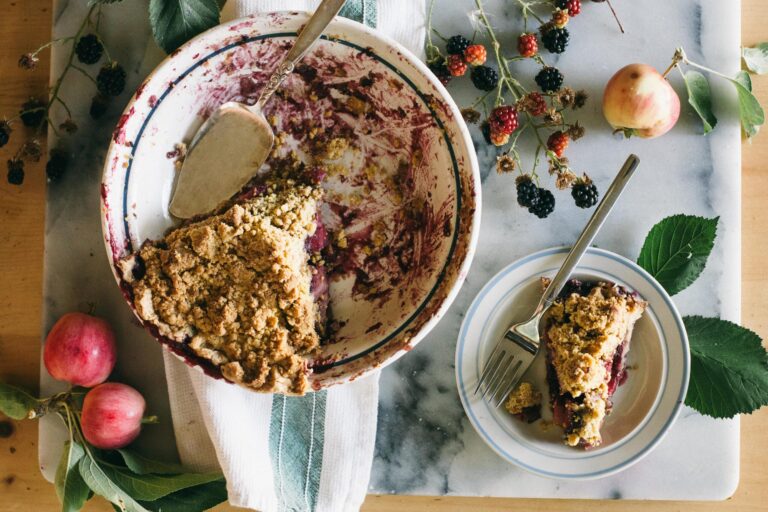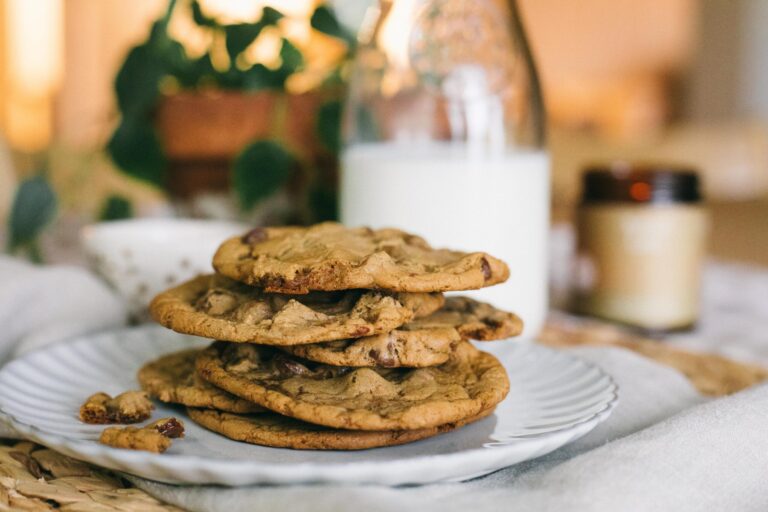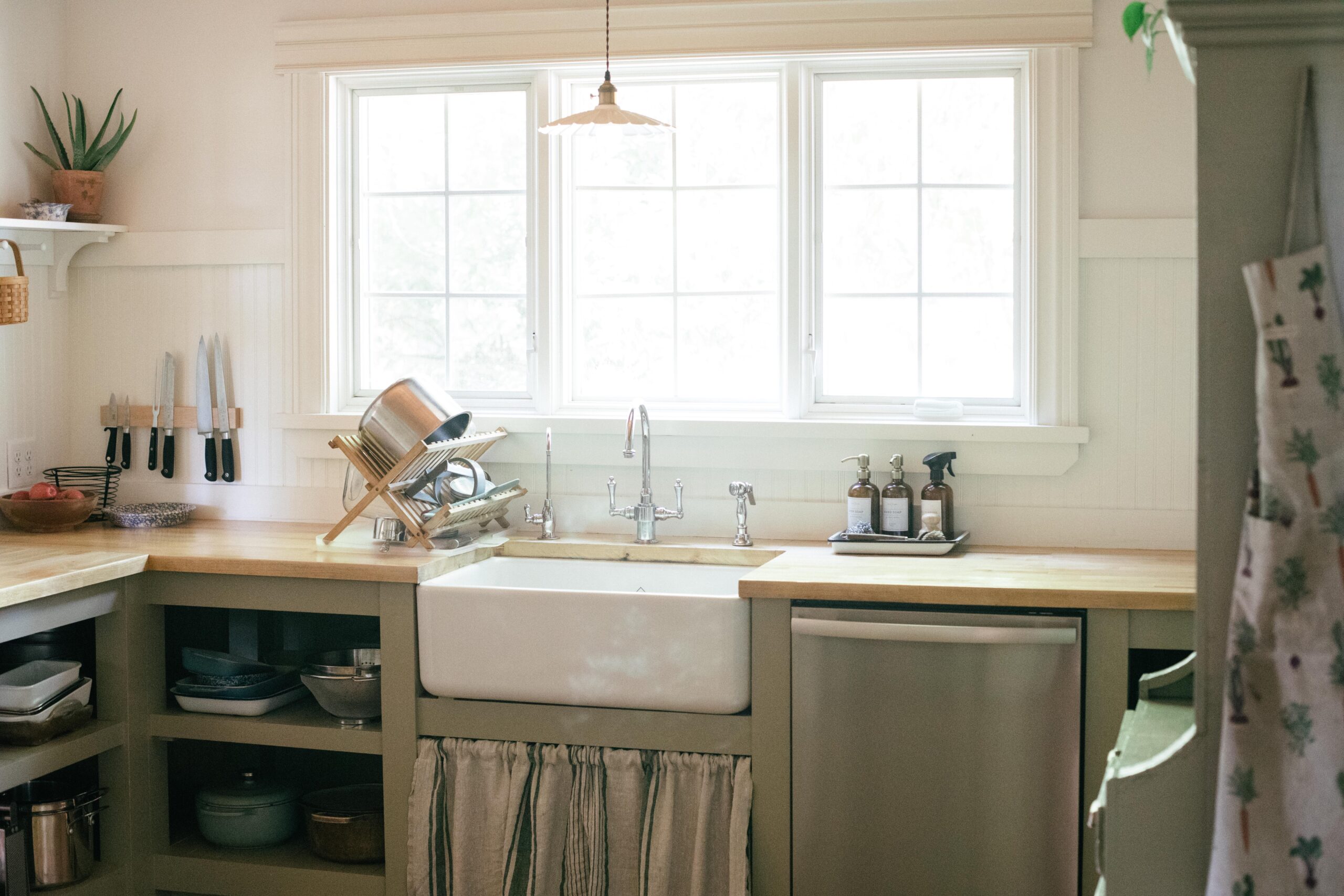
Four years ago, when we purchased this small, 1928 cottage on the side of seasonal lake, we decided it had a very Swedish Cottage sort of vibe. Within the first year, we painted it our version of the trademark “Falu red” color (Benjamin Moore Cottage Red), with bright white trim and windows, and have slowly been surrounding it with cottage style plants and flowers. We added a winding gravel path, lined with river rock, added a split-rail fence and tamed the mangy lawn.
My husband spent a few months installing a brand new sprinkler system, and last summer we enjoyed green grass all season long. We already had big, beautiful trees and some well established lilacs that make our house look like it’s been there hundreds of years. From the outside looking in, our little place- lovingly called Bramblewood– has achieved the very look we were going for.
But on the inside…oh, the inside, friends. The inside has been a JOURNEY.
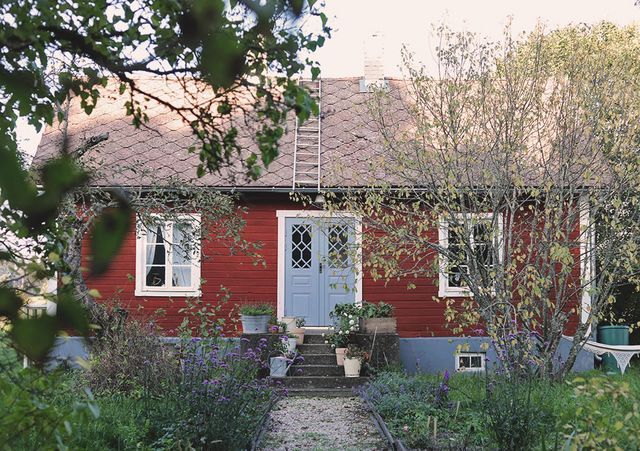
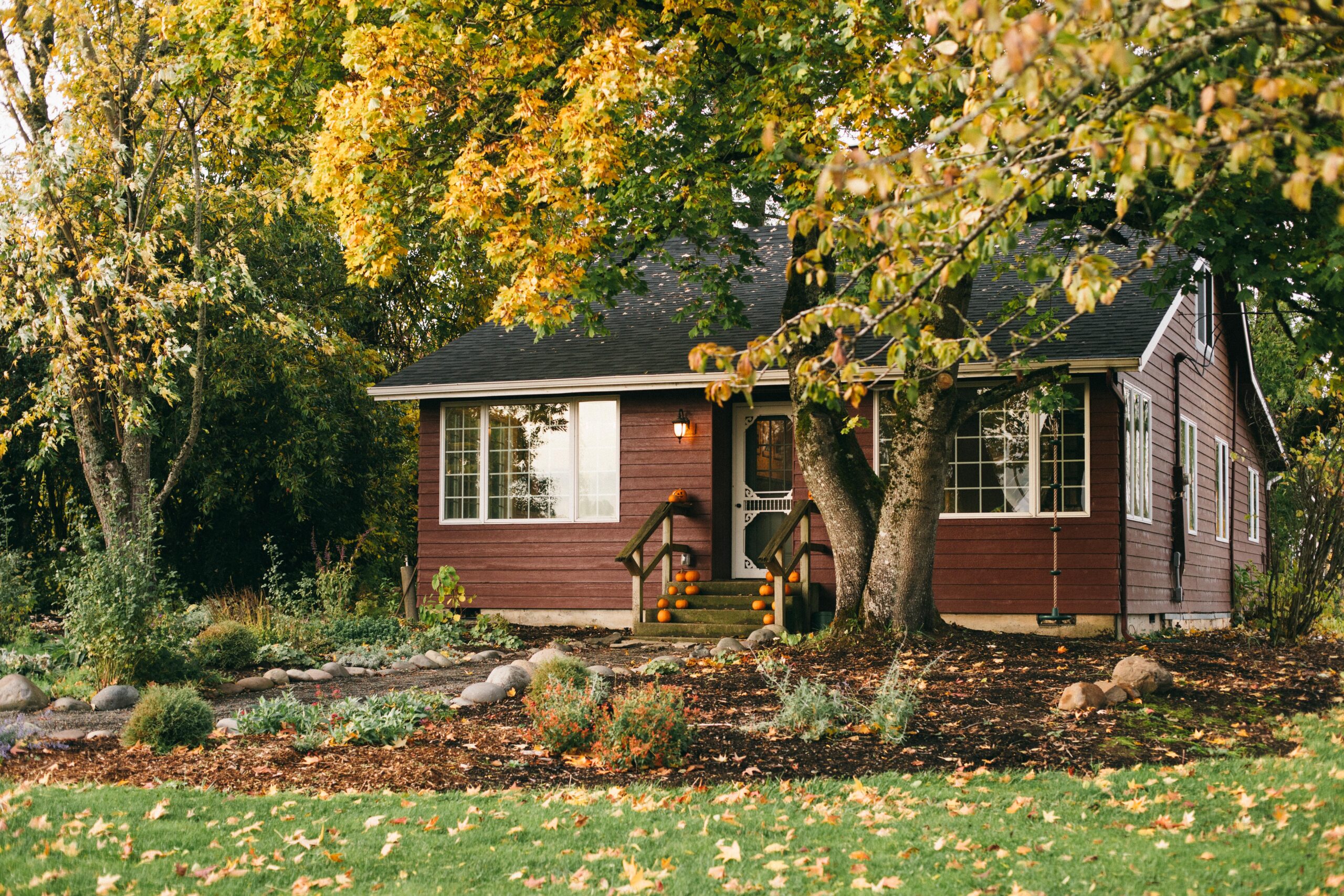
Country style develops over time; it is not a look that can be instantly imposed upon a home. Very few of us are able to think of everything we need for the home and then find it all immediately- we must have time to consider what we need, where we should put it, and what it should look like. A room interior that grows organically and has elements added over the months and years will develop a decorative personality, reflecting the individuality of its owner. It will have an uncontrived charm that is usually lacking in an instantaneous scheme. – from Romantic Country Style
Thanks to a list of unexpected events- an historic ice storm which covered our property in downed trees, a shallow well that basically ran dry and the discovery of mold under our roof- redoing the interior of our home has been a lot slower than we anticipated when we purchased the property. In fact, I remembered just the other day that we had actually gone under contract without even stepping foot inside the home itself. That’s how much we loved the property. I recall saying something to the effect of , “You can do anything with house.” Little did I know how much frustration our little house would bring me over the next four years.
Struggles inside our Swedish cottage
No heat. I don’t want this to sound like a major whine session, because I have learned a lot from living here, but most of our time here has been without certain creature comforts. Heat, for example. As the ice storm struck that first winter, and we found ourselves without heat, we installed the wood stove from my childhood home. Since then, we’ve heated the whole house with that one stove, and there have been plenty of chilly mornings in that time.
Rodents. One of the first things the neighbors told us when we bought this place was that the previous owners had struggled with mice. I must have let that little tidbit go in one ear and out the other, because I could not have anticipated what lied ahead. Let’s just say I am no longer afraid to dispose of a sprung mouse trap, nor chase a mouse into a corner and trap him with a bowl. Should the need arise.
No water. When we moved into Bramblewood in mid-January, we had no concerns that our well might not be deep enough to keep us going all summer long, but come July, it was pretty clear there wasn’t enough water for even a single shower. Digging a new well, not to mention building an entirely new pumphouse, was not only unexpected but very expensive. I’ll never take good water for granted again, I can tell you that much!
Discontent. Aside from some of these other challenges, simply being grateful for our cozy little home has also been a bit of a rollercoaster ride. It’s an incredibly beautiful, quiet, peaceful place to live, and praise the Lord, at the end of the day, we have everything we really need. But it has also been a small, dark, drafty, dirty, rodent-friendly, old house, and some moments here have just been HARD.
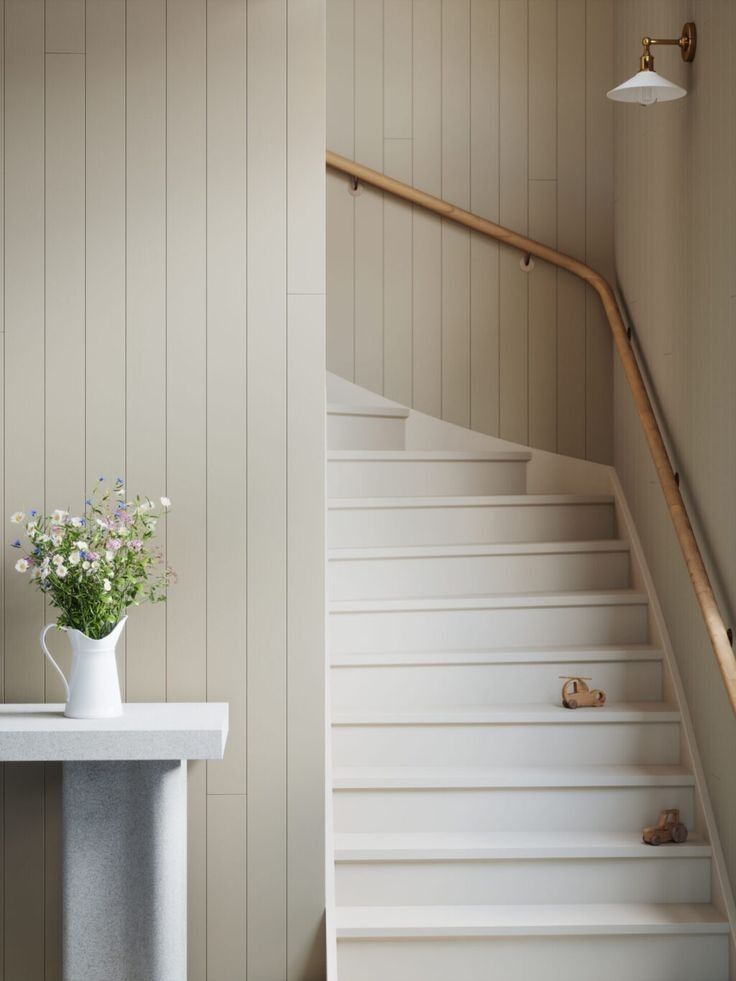
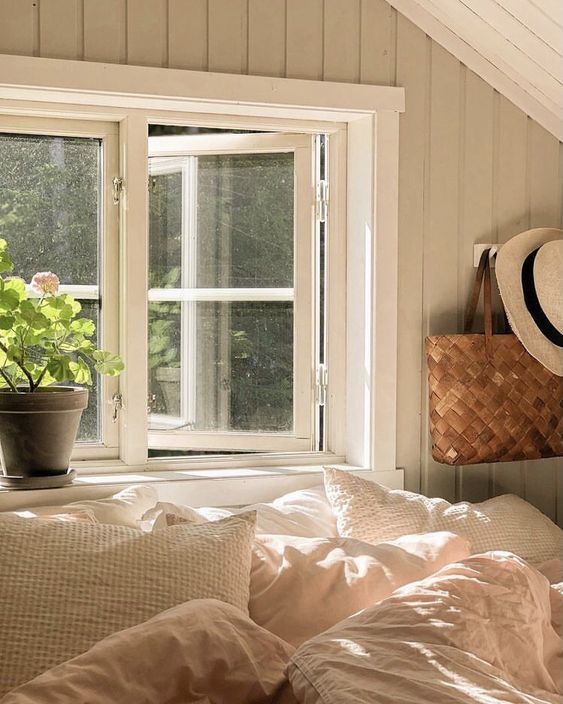
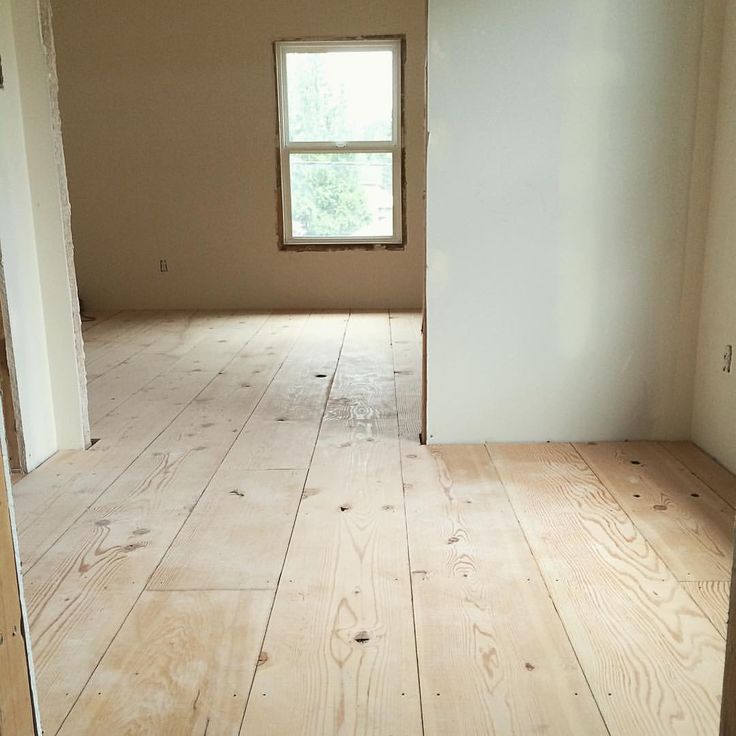
Cottage design challenges
Aside from the logistical challenges of living in a 1928 country cottage, there have also been some tricky design issues to contend with. While the charm oozes from this little country cottage, there are a few big challenges:
- Storage. Our home has no garage. Our home has no closets. We have no built-in cabinetry or drawers. We have no basement. We do have a small attic space, which we’ve been forced to use for the majority of our storage. But other than that, everything we own must be contained in dressers, hutches, free-standing cabinets, or be exposed on open shelving. It’s made me extremely conscientious about the things we decide to hold onto, and rather ruthless about the things we must get rid of.
- Light. I have realized over the years, especially living in gray, rainy Oregon, that LIGHT is paramount for me. I struggle with seasonal depression in the Winter months, so any bit of light or connection to the outdoors is vital. The two main rooms where we spend most of our time- living room and kitchen- are the darkest rooms in the house. They also have low ceilings. And this has been really challenging for me as I try to maximize natural light.
- Small/Awkward spaces. Our living room is long and narrow, with four separate entrance points and a window. Not to mention a wood stove. It has been TRICKY to decorate. Where the heck do you put furniture!?
Our kitchen is too small for a fridge, so it has to live in the mudroom, along with a freezer, washer and dryer, and all our coats and shoes. Our bedrooms are all small and can only contain a few pieces of furniture. And finding the right combination of necessary storage pieces and visual effect in our house has resulted in a lot of trial-and-error.
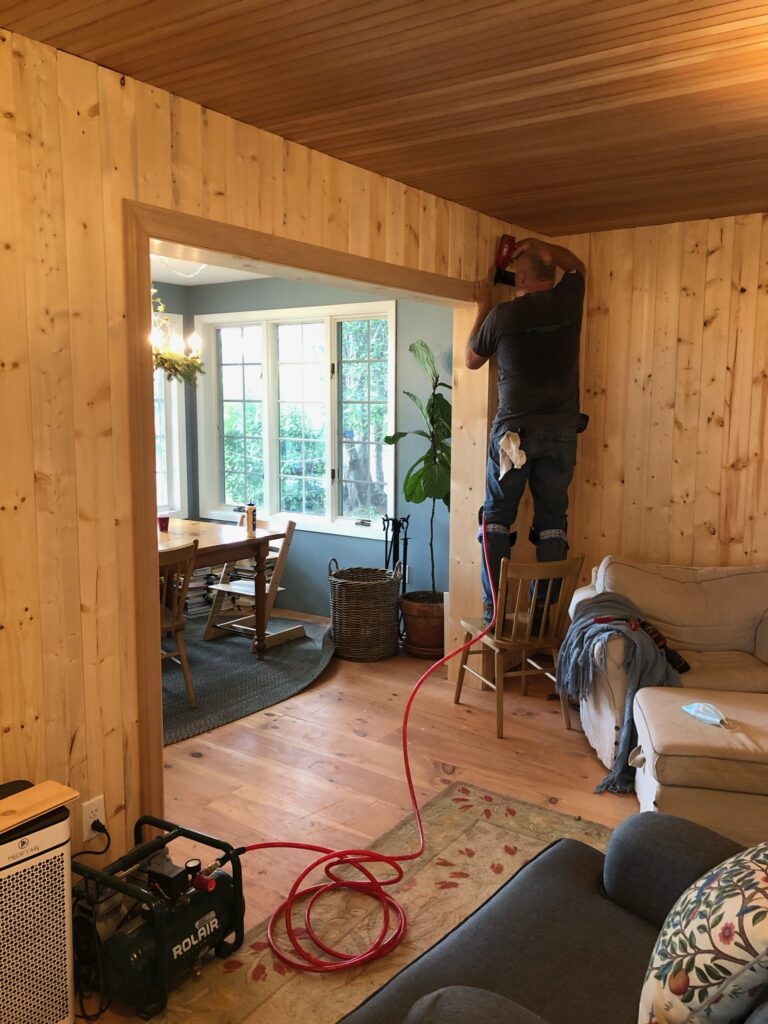
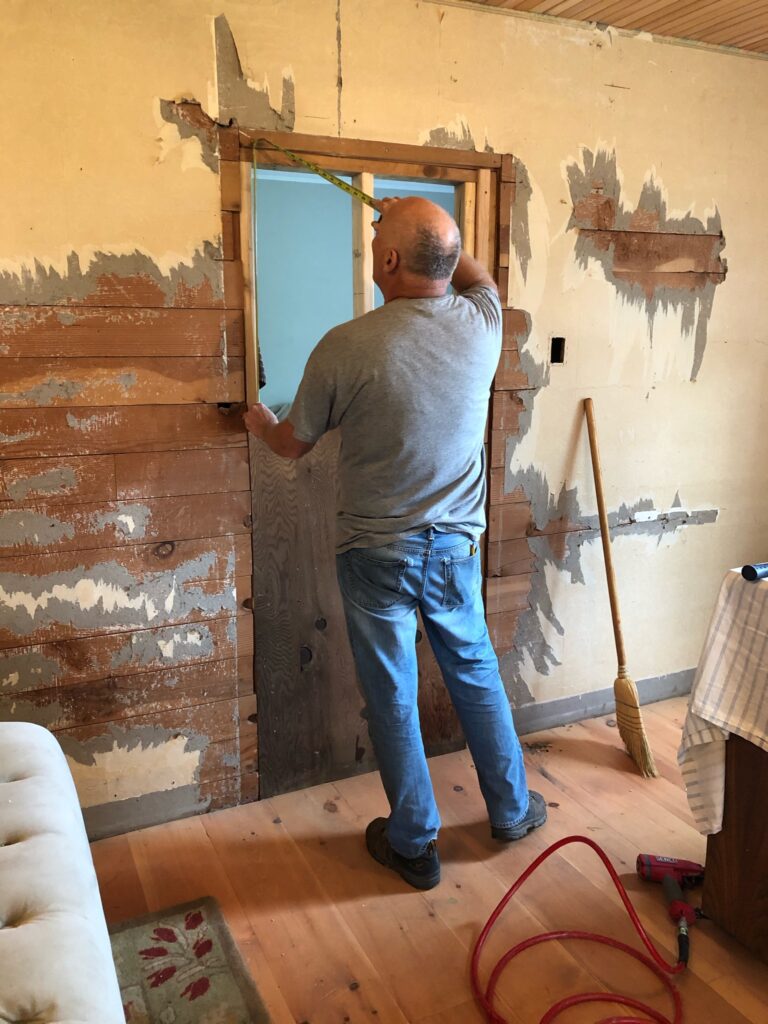
How to work with the home you have
Learning to work with the home you actually have is a really important step in journeying towards gratitude and contentment. This is something I’ve really been focused on since Winter. Here’s a few ways I’ve approached some of the sticking points of our little 1928 cottage.
Lack of storage. Frankly, there’s not a whole lot to do about this one besides be really, really, ridiculously intentional about your stuff. In addition to doing a house-wide declutter every 3 months or so, I just try to be a ruthless gatekeeper about what comes in to my home. I simply can not “store things in case I need it later.” If it isn’t used or doesn’t have a purpose, it just has to go. By now, everyone in my life pretty much knows that my house is small and there’s no storage, so it’s gotten easier over the years.
Lack of light. Implementing the use of a white + light color palette in my home over the last year has significantly improved the lack of natural light in our home (mostly due to the large, beautiful trees all around us). All trim and some walls are Alabaster by SW, my kitchen is Providence Olive by Benjamin Moore, and we’ve started using Abingdon Putty by Benjamin Moore on furniture. Using the same colors, all very light and airy, has significantly helped with the house feeling too dark. I’m slowly either refinishing, painting or replacing furniture pieces that feel too dark for our space, and everytime I do, the house just seems to sing!
Small/awkward paces. While we can’t change the walls or layout of our little cottage home, I have learned that minimal furnishings, with light colors and clean lines, really helps spaces not feel too crowded. Lighter woods or painted furniture suits our small spaces the best.
I also don’t store things under beds, I try not to have side tables loaded down with clutter and I try to make sure there aren’t any obstacles that make moving through our small spaces trickier.
The other thing that has really helped our spaces feel bigger, even if they aren’t, is to use the same few colors throughout the whole house. Using the same colors makes everything feel unified, and when you look from one room to the next, having the same color palette lets the eye flow right past the walls and into the next space.
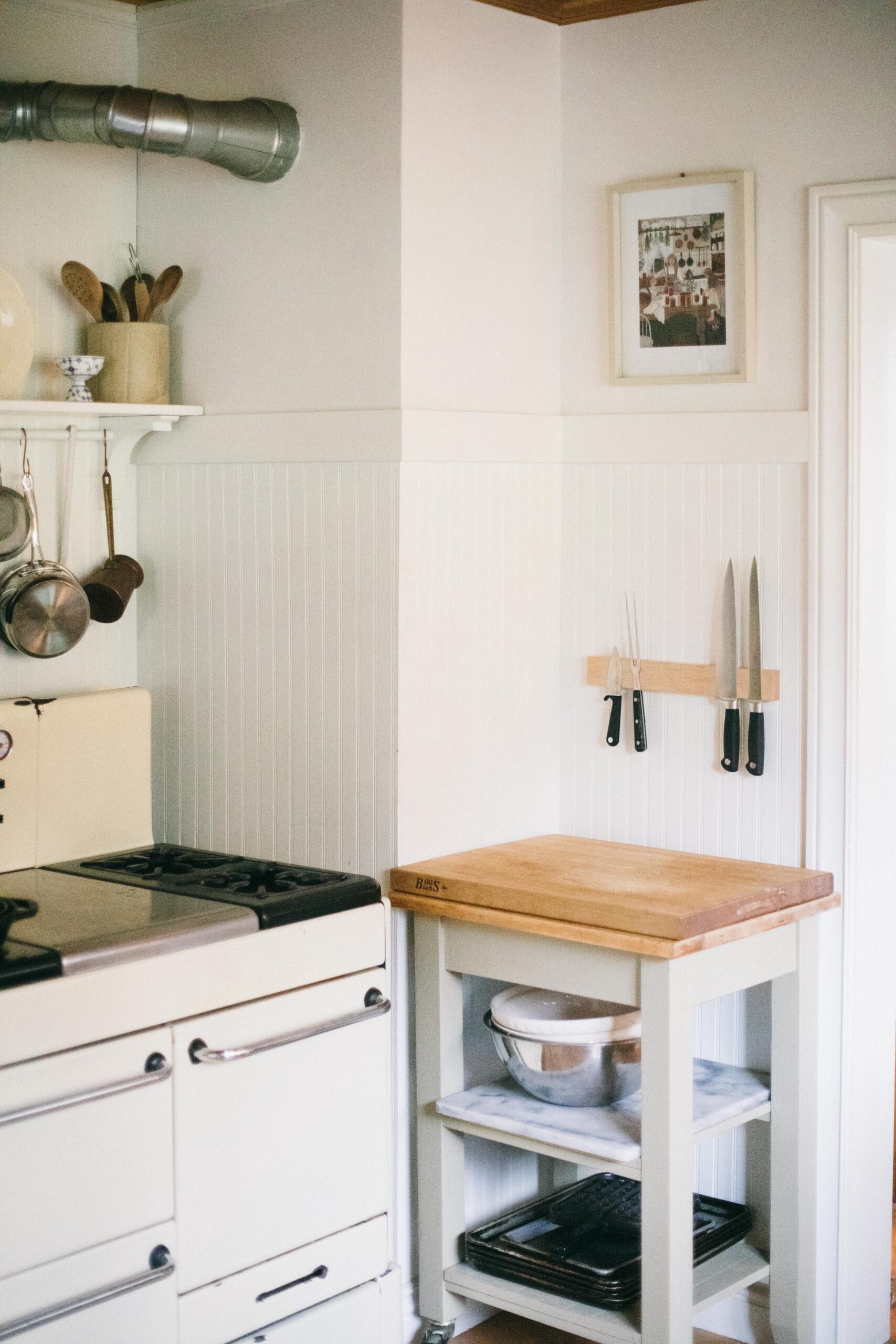
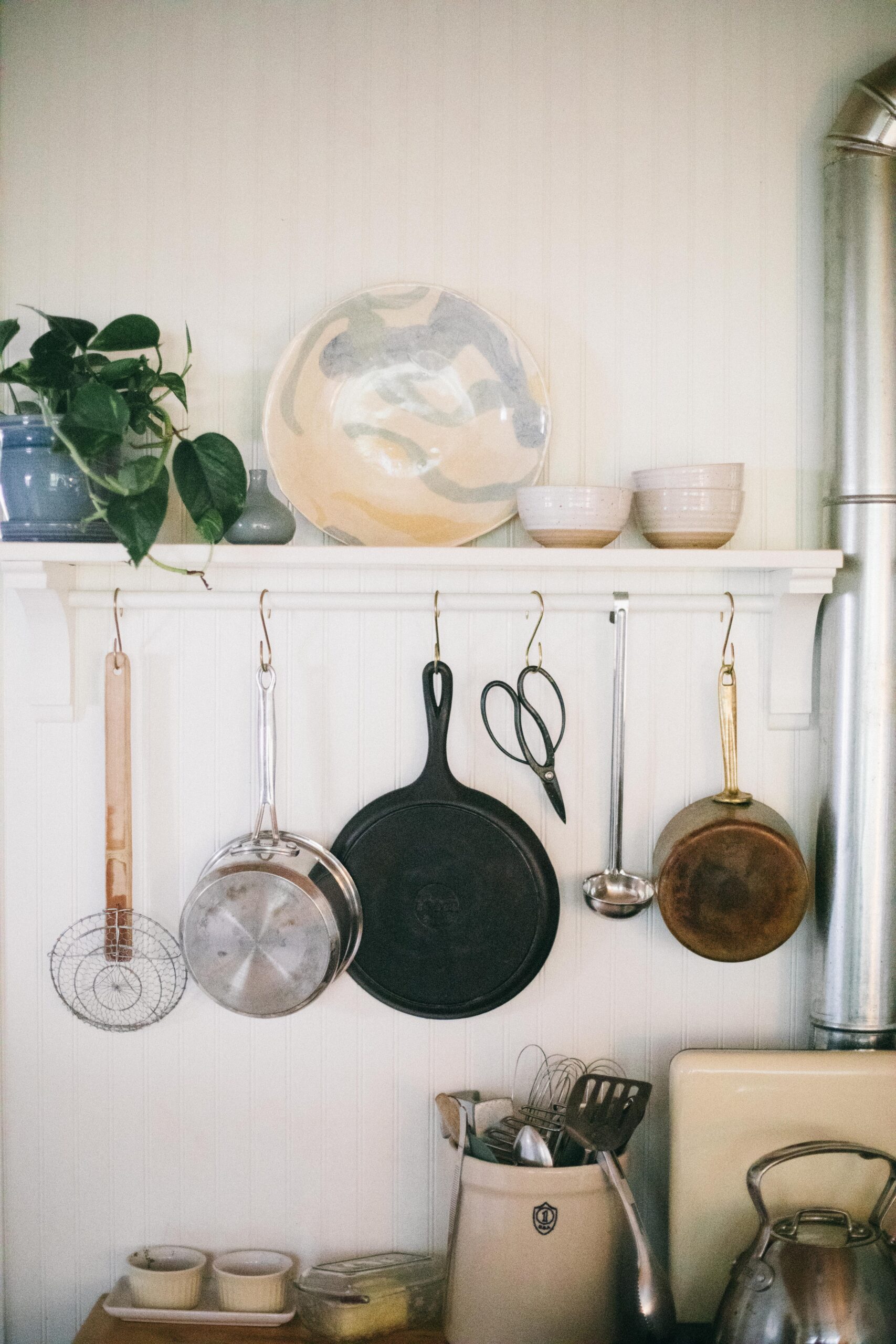
Things I’ve learned decorating this cottage
This house has opinions you guys. There’ve been times when I have tried some decor idea, only for the house to chew it up and spit it out. This place knows what it wants and what it doesn’t. I sure wish it could have just told me from the beginning. Would have made things a lot easier along the way.
Here’s a few things I have learned so far:
- Keep it simple. I wouldn’t exactly label myself a minimalist. But it would be very interesting to see what percentage of things we still own from when we moved in. Living with such minimal storage and small spaces, I have learned the hard way that 1) if it doesn’t have a home and 2) it isn’t constantly used, it just needs to go. I also just kind of need things to be beautiful. It’s just who I am. So even open storage needs to hold up to my aesthetic standards.
I don’t enjoy cleaning around a ton of possessions or dusting too many trinkets, so simple really does work for me. Plus, it makes everything easier to tidy up quickly and efficiently. I may not be an overly obsessive cleaner, but I am very tidy, and having every space picked up and put away every night is very important in our small spaces.
- Paint it white (or light). When we moved in here, the white farmhouse trend had begun to sour. Everyone was totally over it, and the rich English colors and even wallpapers had just arrived on the scene. My two favorite influencers were infusing Old World style into every area of their homes. I applied the same vibe with enthusiasm to our new spaces.
Guess what? It was AWFUL. Way too busy and way too loud. The rich colors were suffocating. The patterns, nauseating.
In desperation, I finally painted the living room white. And it was like the whole house took a sigh of relief. Every single thing I’ve painted white (or a very light color) in this house has instantly looked at home. Light, airy and like it was made to be here. The more monochromatic the color scheme has become, the more my family seems relaxed and at home. A softer, simpler palette helps this house to celebrate it’s very best features: big wood windows, great woodwork and natural materials. Not to mention the 360 degree views. - Natural materials. Graciously, I knew enough about this house (and myself) to realize that natural materials would be key. We installed wide-plank pine flooring when we moved in, which has been a really great choice. I wish we’d gone lighter on the stain, but live and learn. We’ll refinish them in the next few years.
In the last year, as I’ve committed more fully to the Swedish country style, I’ve really started to gravitate towards linen, cotton, and other natural fibers for furniture and textiles. We’ve got butcher block counters in the kitchen, and I’m hoping someday to build a hearth with natural stone from my parent’s cabin in Idaho. I’ve incorporated more and more baskets as both storage and decor, and have also begun collecting thrifted handmade pottery. Natural, organic elements just make me feel at home.
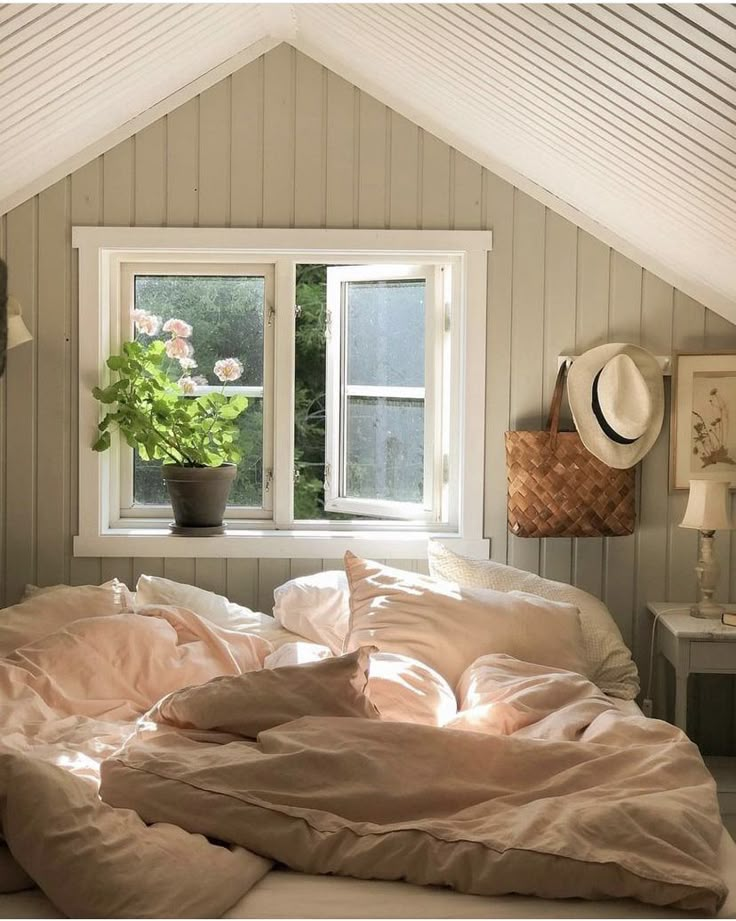
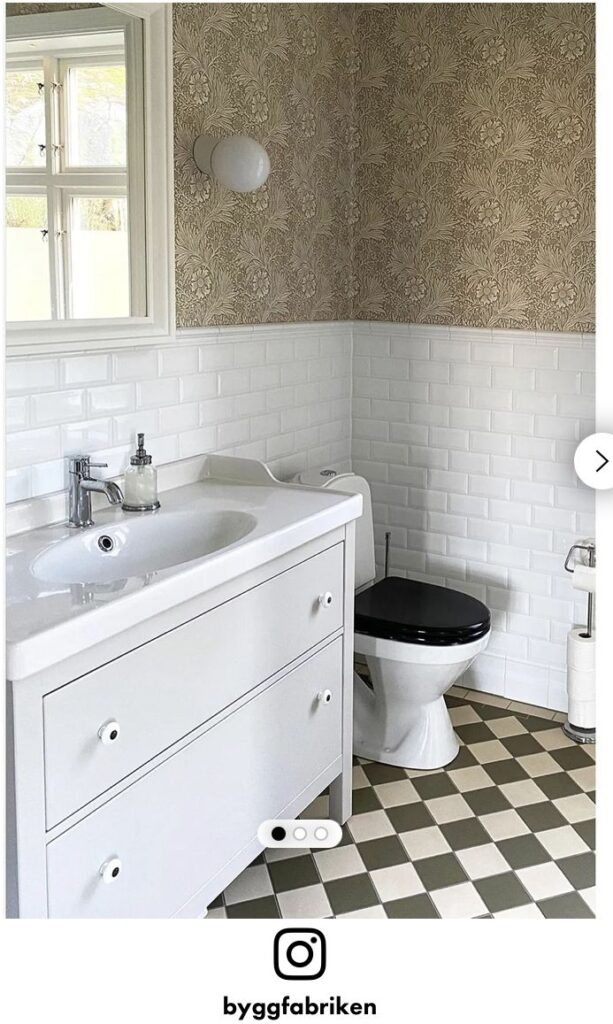
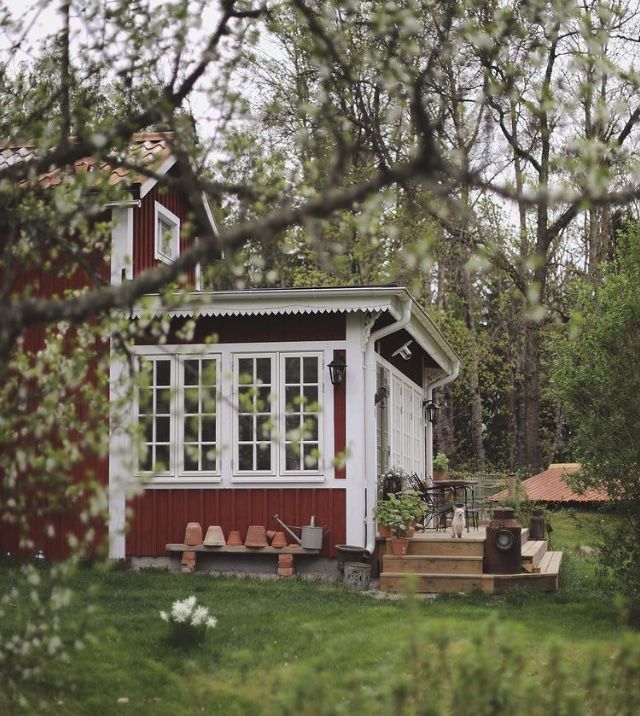
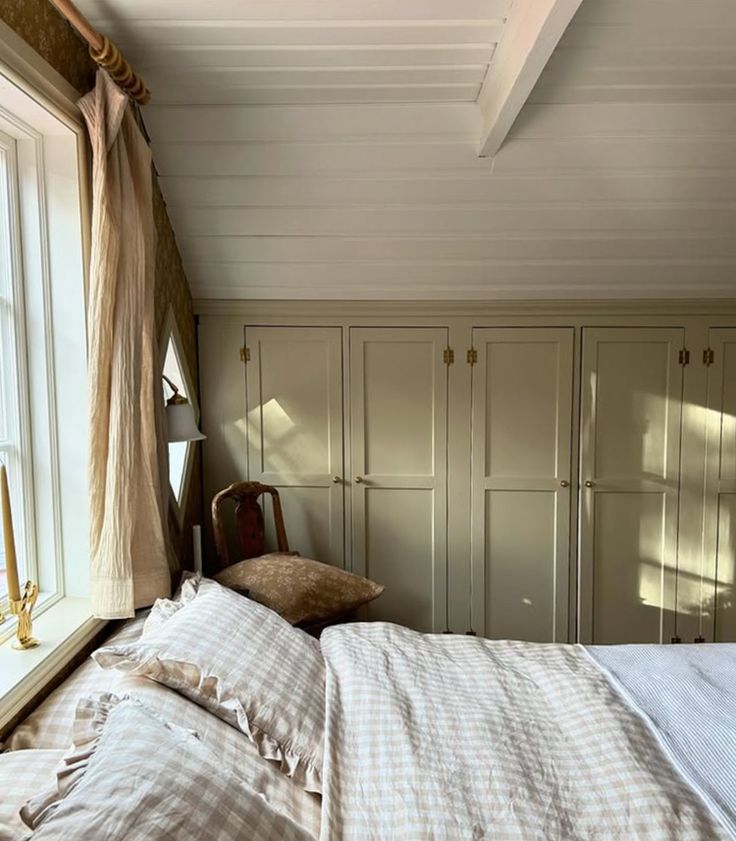
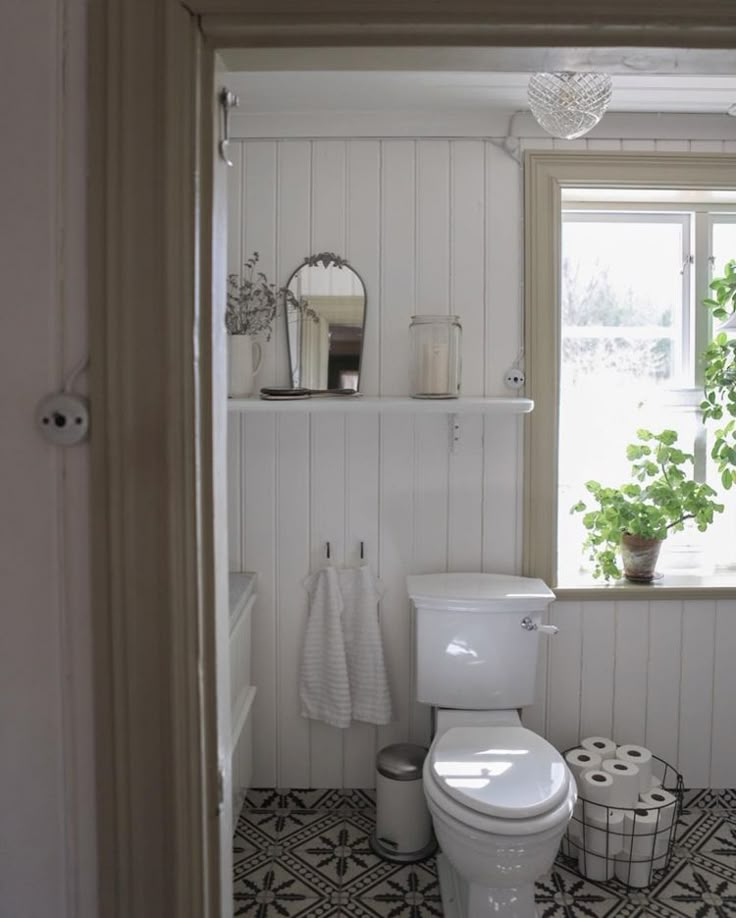
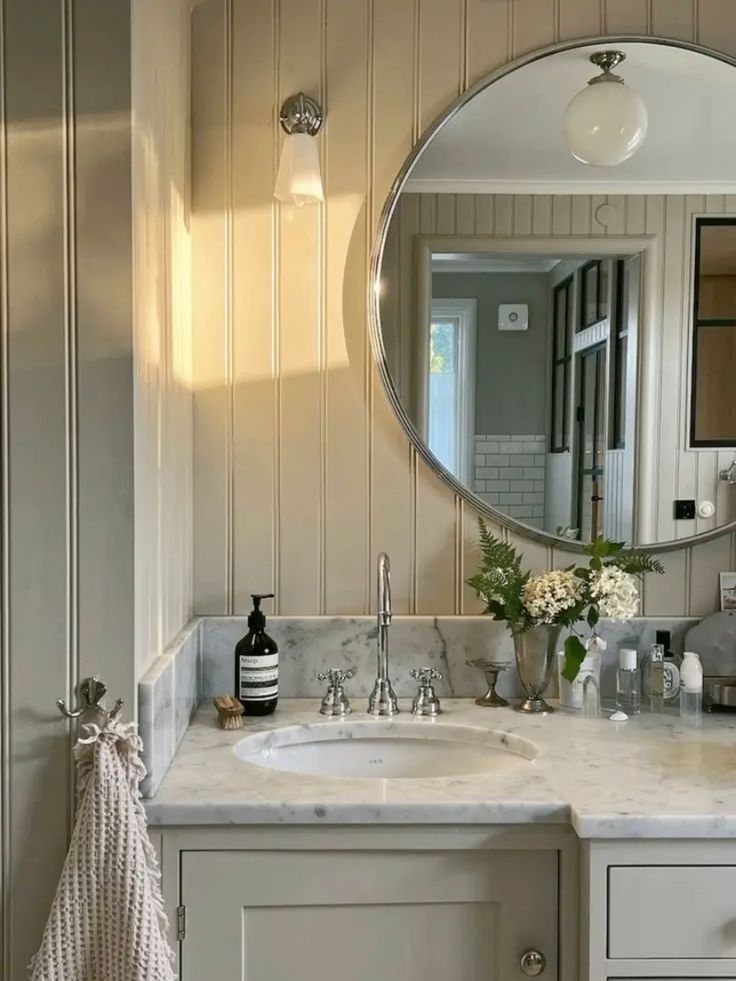
What are the elements of Swedish cottage style?
So what’s this Swedish Cottage style all about anyway? What about our existing house’s architecture made me think this vibe would be a good fit? Here are a few of the elements that really steered me towards the vibe of a small, sweet country house in the Scandinavian countryside.
- Small, divided rooms. Spurred on by that original photo of a red Swedish cottage with blue doors (pictured above), I began a deep dive into Swedish country homes. And what I quickly discovered was that most of them are not large, nor particularly open. Most of these homes have small, divided up rooms, usually featuring lots of cased openings with beautiful millwork. The Swedes often use them as summer homes, so they don’t need to be too big or elaborate.
- Big windows. Sweden, even more than Oregon, struggles with light in the cooler months. One of the things that most Swedish cottages emphasize is big, bright windows. I also noticed that they often choose to embellish or add detail to their window trim, hardware and mullions. Windows are not only a necessity, but a celebrated design feature. They’re rarely covered with curtains or draperies, leaving them free to let in as much light as possible.
In conjunction with their celebration of windows, the Swedes seem equally enamored with the window seat. A sentiment which I share wholeheartedly. - Light colors. I already alluded to this earlier, but almost every Swedish cottage I’ve seen photos of uses a very light, soft color palette. Whites, very pale greens, grays, blues and creams. Accented of course, with natural woods, natural fibers and subtle textiles. Everything feels light and airy, because when the world is dark so many months of the year, you just need things to feel lighter.
- Lots of wood paneling. The final defining feature of Swedish cottages that I really fell in love with was all the wood paneling. Wood paneling on the ceilings and wood paneling on the walls. Wainscots for sure, but also just floor to ceiling, tongue and groove walls. Painted white with colored trim. Or painted a soft color with white trim. Or just painted white in total. This paneling elongates, elevates and widens smaller rooms, and has so much more character than your basic drywall.
Colors, textures, and materials in the country home are natural; styles are understated, comfortable and informal; decorations are eclectic. The look at its best is in sympathy with the environment, relaxing into it rather than standing out from it. – from Romantic Country Style
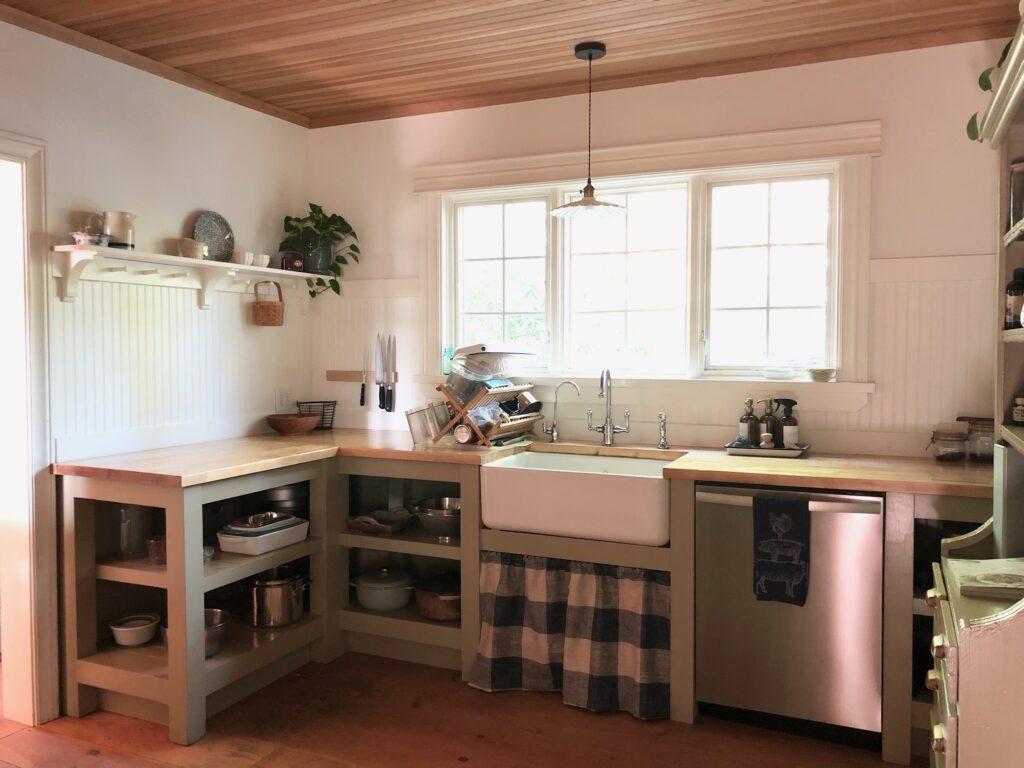
Embarking on a Swedish cottage renovation
As you may know, if you follow me on Instagram or Substack, we have recently begun renovating both bathrooms and our entire upstairs. I am hoping to share some design inspiration soon, but until then, you can see where I’m headed from the things we’ve talked about in this post. As we design the new spaces as a part of this phase of the remodel, I will bringing in the very Swedish cottage elements we’ve talked about here:
- Simple, light, bright colors and spaces.
- Natural materials.
- Lots of light and emphasizing windows.
- Beautiful woodwork and wood paneling.
I can’t wait to share it with you! Make sure you are following along on Instagram (check out my Reno Highlight) and Substack for all the latest updates. It’s gonna be a wild ride!
Share this post
Figuring out how to capture Swedish Cottage style has been a journey. Pin this image so you can save all my ideas, as well as share them with others.
And…leave a comment below and let me know what you think about this look!

Kali
About Me
Hi! I’m Kali. An Oregon mama, proud farmer’s wife, and the creator of the Potager book and blog. On my blog I celebrate from-scratch, seasonal cooking and the joy of gardening. As well as sharing the process of turning our tiny 1928 farmhouse into the Swedish country cottage of my dreams! Come join me!

